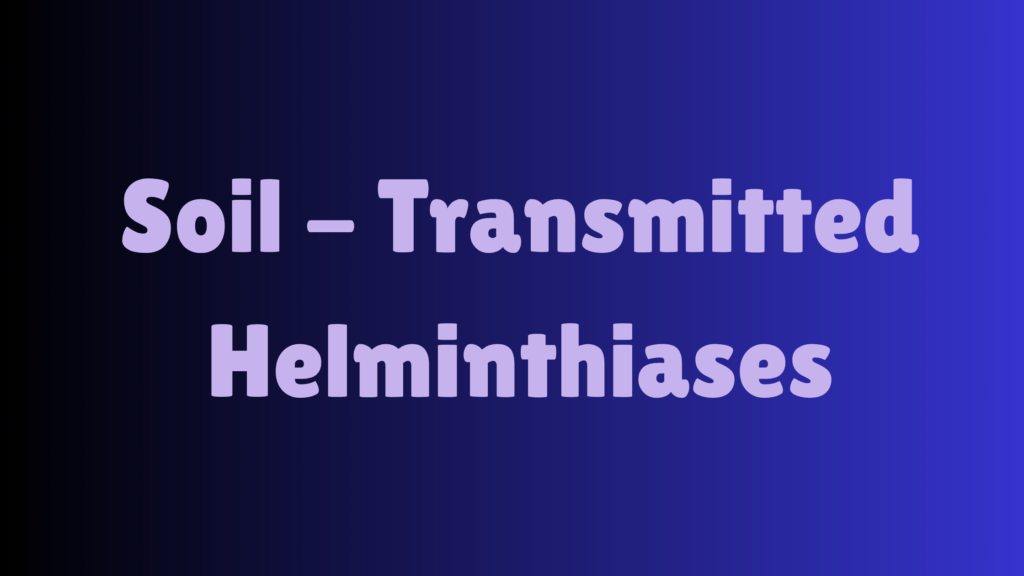What are Soil-Transmitted Helminthiases? 🌱🐛
Soil-transmitted helminthiases are parasitic infections caused by a group of intestinal worms (helminths) that are transmitted through contaminated soil. They primarily affect people living in tropical and subtropical regions with poor sanitation.
Common Soil-Transmitted Helminths
- Ascaris lumbricoides (roundworm)
- Trichuris trichiura (whipworm)
- Ancylostoma duodenale and Necator americanus (hookworms)
How are They Transmitted?
- Eggs or larvae present in human feces contaminate soil due to open defecation or poor sanitation 🚽
- Infection occurs when people ingest contaminated soil or food, or through skin penetration by larvae (hookworms)
- Commonly transmitted by walking barefoot or eating unwashed fruits and vegetables
Symptoms
- Many infections are mild or asymptomatic
- Heavy infections can cause:
- Abdominal pain, diarrhea, and nausea 🤢
- Malnutrition and weight loss
- Anemia (especially with hookworm infections) 🩸
- Growth retardation and cognitive impairment in children
- Fatigue and weakness
Diagnosis
- Stool examination for eggs of the parasites under a microscope
- Sometimes blood tests for anemia
Treatment
- Antihelminthic medications such as albendazole, mebendazole, or ivermectin
- Nutritional support and iron supplements if needed
Prevention 🛡️
- Improve sanitation and hygiene (use toilets, handwashing with soap) 🧼
- Avoid open defecation
- Wear shoes to prevent hookworm larvae skin penetration 👟
- Wash fruits and vegetables thoroughly before eating
- Periodic mass deworming programs in endemic areas
